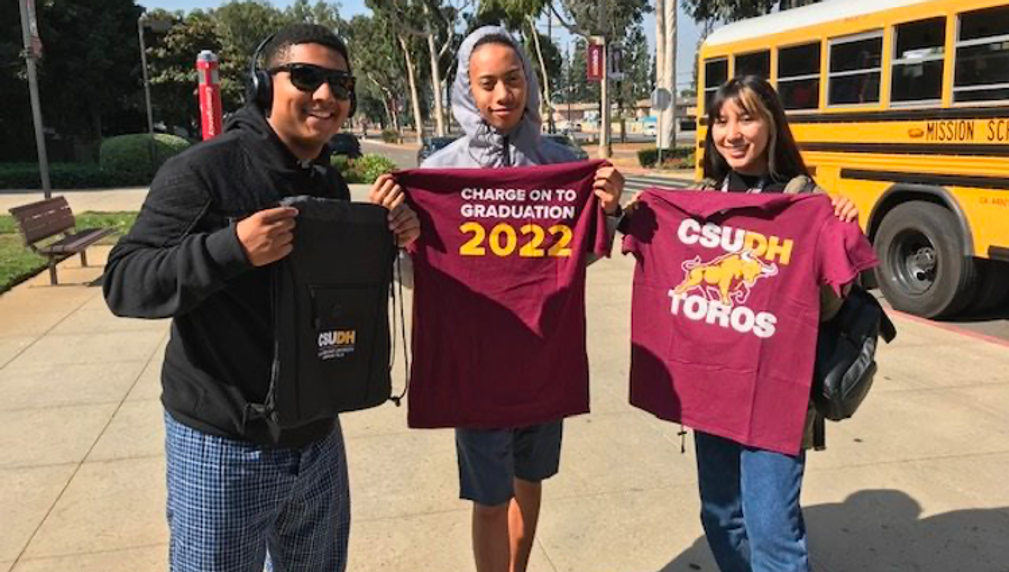Empowering Long Beach High Schoolers for Academic and Personal Success
Our programs address the need for preventative services to provide caring adults/mentors to youth facing adversity. Through these programs our primary objective is to serve at least 500 disadvantaged youth and we are excited to propose innovative enhancements to our programs that will bring increased academic success to the youth we serve.

What is the primary issue area that your application will impact?
K-12 STEAM Education
In which areas of Los Angeles will you be directly working?
South Bay
In what stage of innovation is this project, program, or initiative?
Expand existing project, program, or initiative
What is your understanding of the issue that you are seeking to address?
Central and downtown Long Beach has the highest concentration of poor children in Los Angeles County, which has the highest estimated poverty rates among young children in the state of California—68%. In Long Beach alone, nearly 8,000 children are living in poverty, and close to 1,600 are living in deep poverty. Poorer children and teens are at a greater risk for negative outcomes such as poor academic achievement, abuse and neglect, behavioral and socioemotional problems, physical health problems, and developmental delays. Students from low-income families are more than twice as likely to drop out of school as middle-income kids, and over ten times more likely than their high-income peers to drop out. Dropping out of school is detrimental to students’ futures – it increases the likelihood of committing a crime and imprisonment, being unemployed, and living below the poverty line.
Describe the project, program, or initiative this grant will support to address the issue.
The Academic Mentoring Program (AMP), BLAST’s flagship program, harnesses the enthusiasm and community spirit of local college students to provide personal mentoring to over 600 youth in Long Beach, giving service-learning opportunities for college students as well as one-on-one mentoring and personal academic support for the youth. In 2009, the Bridge to Success (B2S) program was created to address the staggering dropout crisis of underserved youth in Long Beach and bring over 400 students the opportunity to rebuild their education, finish high school, and open their world to new college and career opportunities. Both programs emphasize the importance of having a “Growth Mindset,” the underlying belief that abilities can be developed through effort and practice. By teaching youth to embrace the challenge, we seek to alter long-term academic and personal outcomes for these students. We believe that a growth mindset is a key to life-long success. Despite steady increases in graduation rates within the state of California, some schools within Long Beach have rates as low as 55%. Working directly with these schools in the Long Beach Unified School District, B2S gives high school students who have not been successful in a traditional classroom setting, are credit deficient, and are at-risk for dropping out of school, the opportunity to receive high school credit, graduate with a high school diploma, and gain real-life career-based and personal self-help skills.
Describe how Los Angeles County will be different if your work is successful.
Long Beach BLAST creates direct collaborations between educational, nonprofit, and corporate organizations in the local Long Beach community. There are many mentoring organizations in Long Beach, but none are implemented like the Academic Mentoring Program. Volunteers are purposefully pulled from local colleges and placed directly into schools where there is a need and where students need additional academic help, have a low attendance rate, low self-esteem issues, etc. These experiences encourage future educators and social servants to take a personal interest in the youth of Long Beach. Mentoring is becoming a fully integrated in-school support within the Long Beach Unified School District in grades K-12. Every year, school educators and administrators personally contact BLAST for mentor volunteers.
What evidence do you have that this project, program, or initiative is or will be successful, and how will you define and measure success?
All BLAST programs utilize a multi-faceted evaluation, which includes both qualitative and quantitative methods. This assessment tool was redeveloped in 2015 in consultation with Dr. Beth Manke of California State University Long Beach and recently in 2020 with Dr. Kristin Powers of California State University Long Beach and data consultant, Eric Wat with Destiny Consulting Services. The evaluation categories include academics, behavior, attitude, self-esteem, attendance, and motivation. Bridge to Success goes beyond this evaluation system. BLAST consults with the Long Beach Unified School District to gather data (grades, attendance, citizenship, demographic, social-emotional learning survey results, etc.) on participating students. Our partner schools and LBUSD provide us with pre and post data for Bridge to Success students to help us better evaluate the efficiency of the program and allow us to make enhancements. LBUSD also provides data on where each B2S student attends college.
Approximately how many people will be impacted by this project, program, or initiative?
Direct Impact: 600
Indirect Impact: 500